House Rewire Plymouth
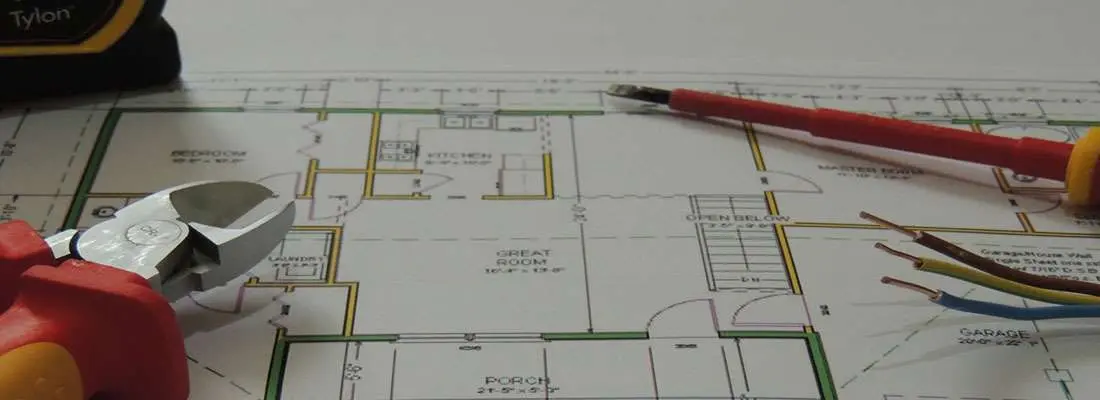

You may find yourself in a situation where you are moving house and a report from a solicitor has informed you that your house needs rewiring.
You may have arranged for an electrician to come and add a socket or install an EV charger. And they're announcing that they can't do the work unless the existing wiring is improved. You start thinking that that is a little bit odd because you've never noticed a problem with the electrics in your house. Everything is just working fine.
If your house is aged between 25-30 years, there could be potential dangers looming. Some electrical installations are missing key safety elements that are now pretty much essential in new installations. The consequences of outdated or deteriorating wiring can be severe.
If you want to entrust electrical work to us or find out more - contact us. We are always ready to help you.
Call Us
Call one of our registered Plymouth electricians for your FREE quote
1. Look at the fuse board
If your fuse board looks like in this picture, then that is an indication that the wiring behind it is older and maybe in need of replacing. In addition, this type of fuse board is missing some critical forms of protection that can make your installation safer. A rewire combined with a new fuse board or consumer unit will provide you with something called an RCBO that helps to protect users from electric shock, and SPD, which can protect your appliances from damaging surges in electrical supply.
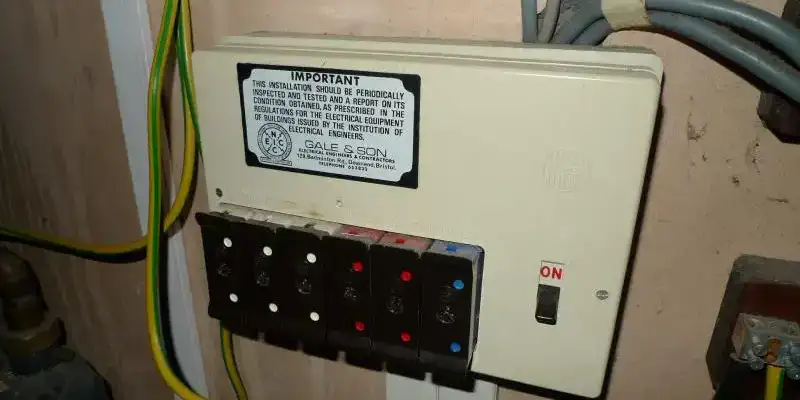
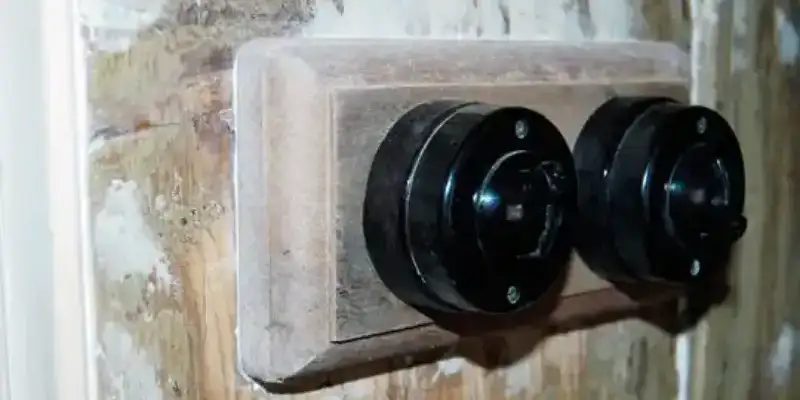
2. Switches, sockets, isolators
Another clue can be found by looking at your switches, sockets and isolators. The one you can see in this picture is made of old plastic, called bakelite and if they look like this, then it's possible the older wiring, may be in place behind it and may need replacing. However, it's possible that someone may have come in and changed all the sockets, switches and isolators fronts in your house to kind of spurce a property up before sale without actually replacing any old degraded wiring behind them. If your socket outlets are a little bit older and yellowed or even damaged then again that's an indication that there maybe old unsuitable cable behind it.
3. Cables
Nowadays, we tend to install cables that are insulated with pvc and the outer sheath is also made of pvc now. If you look around your property, you may be able to see some of the existing cables running outside to a socket or around your fuse board or even in the loft if you can access it. Older installations used to be wired up in cables that look like in the picture. It's insulated in vulcanized indian rubber or VIR as it is shortened and over time this insulation has the tendency to turn brittle and break away. So, if the cables in your house look like this, the likely rewiring a house is required.

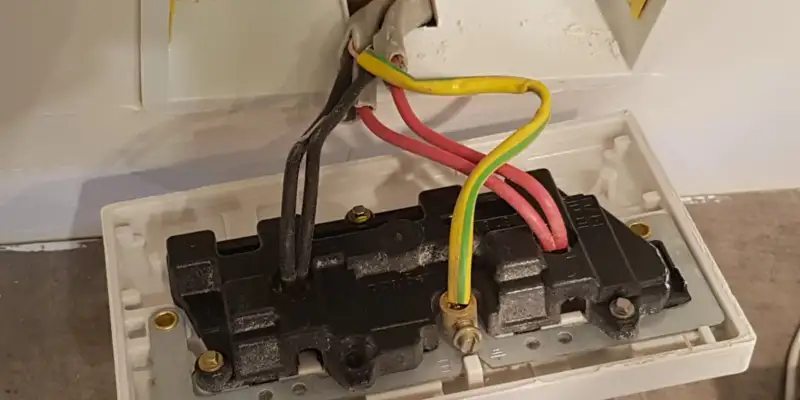
4. Earth connections
If you ever replaced or removed a socket or a switch in your house, you may have noticed that cables have three conductors in them. Red (line) and black (neutral) conductors make the electrical system work, so when you plug in your toaster, if either one of these isn't connected, it simply won't turn on, and you know that there is a problem with one of these conductors. Green and yellow (cpc) is a safety conductor. It's the one that connects to the metal bodywork of an appliance, providing a connection to earth. If this conductor is not properly connected, most appliances will continue to work perfectly, and you will have no idea that it is not connected to earth until something goes wrong inside the appliance and metal bodywork becomes live. If someone then touches it, they could receive a dangerous, possibly even lethal electric shock. If you ever opened up a socket or a switch and not seen this green and yellow conductor, then it's possible you'll need the cables replacing with ones that include it.
5. Cracked insulation
If insulation is cracked and brittle, then that's a sign that the electrical installation is aging and maybe ready to get replaced.
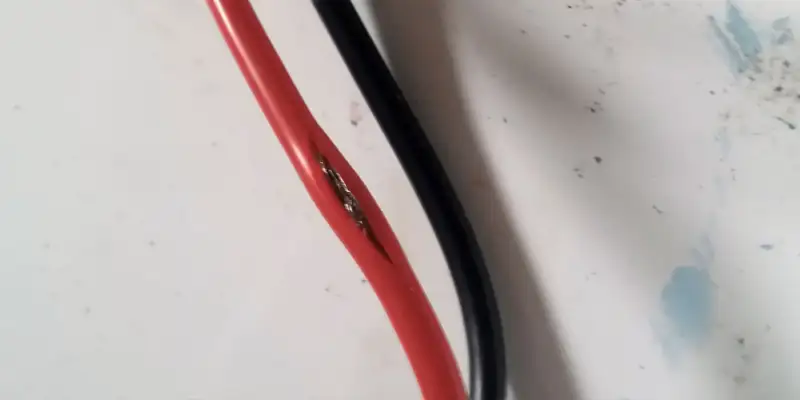
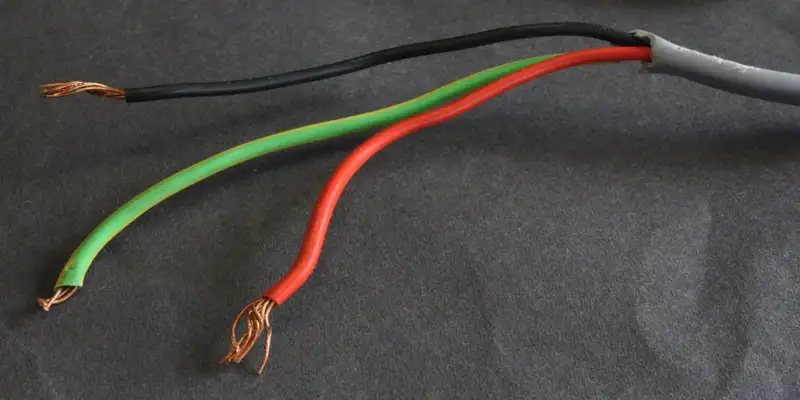
6. Cable colours
The colours that we used to identify the conductors were changed in order to hormonize with European colours back in 2004. You do not need to rewire a house just to update the colours but it can give you an idea of how old the installation is. If the colours of the conductors in your property are black and red, then it was installed before 2004 and may ever be decades old, especially if the green and yellow conductor is just solid green instead. If the conductors are brown an blue, then you know that installation was carried out after 2004.
7. Rodent damage
This might not be the first thing that you think of when looking at the property and considering if it needs rewiring. However, in older houses it is not uncommon to find that rats or mice have been gnawing on the insulation around the cables. This has caused live parts to be exposed, leading to the danger of electric shock or fire. This type of damage is likely to be most apparent in areas like the loft or cellar, if you have got one. If the damage is extensive enough, it may even need electrical rewiring with a wiring system that's designed to prevent vermin from damaging the cables again.
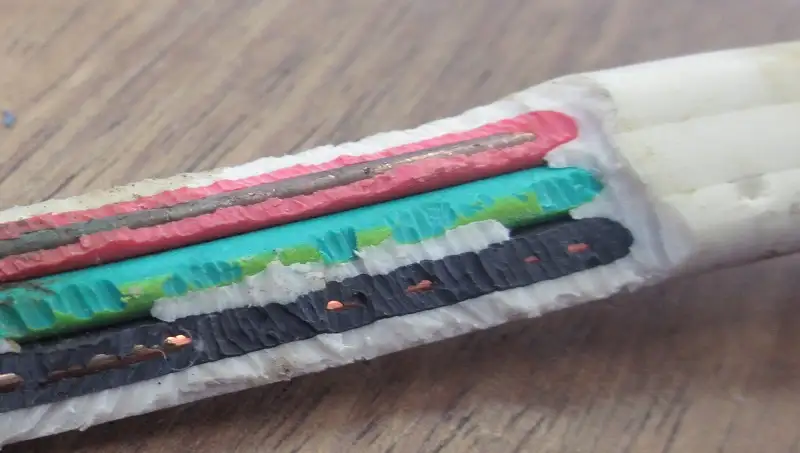
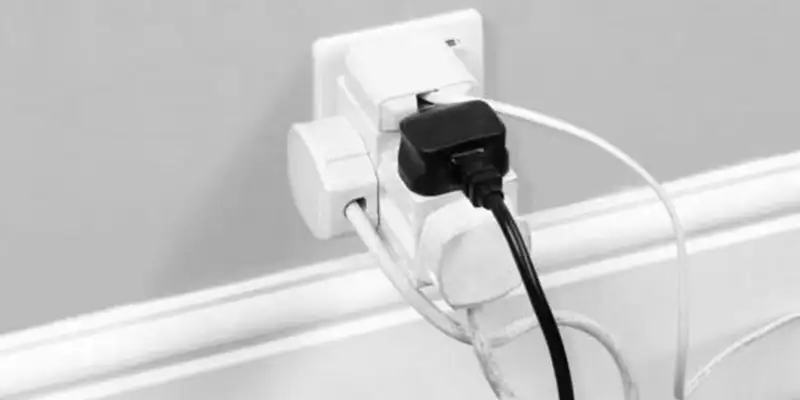
8. Convenience of the installation
You may just want to think about if the current installation is working for you. Do you find yourself running extension leads all over the place, because you don't have enough sockets, or they are in the wrong places. In times past, it was kind of standard practice to put one socket in each room and that was considered to be enough. If the numbers of sockets are on the low side in your installation, then it's possible that that installation is a bit older and may need rewiring, or you just want to add some extra points.
If you are considering the purchase of an older property, a thorough check must be completed by a qualified electrician before buying, to make sure the wiring is safe.
Routine inspections are recommended every 10 years for properties under personal ownership and every 5 years for rental properties.
In cases of house extensions or conversions, compliance with the latest Building Regulations is essential for all new and updated wiring to guarantee safety and security.
Call our qualified Plymouth electrician for your FREE quote
A commonly asked question by our clients is, "How much does it cost to rewire a house?"
The cost is dependent on a number of factors like size of the property, complexity of the work, used materials, that you will have to consider. As the size of a property increases, so does cost and the amount of time needed in order to rewire the entire property. Thorough planning is crucial, as electricians tend to work more efficiently in empty and quiet environments. Being prepared for all circumstances is essential. Additionally, the location within the UK can impact overall costs due to regional variations in contractor expenses.
Our indicative prices
| Property type | Time | Costs |
|---|---|---|
| 2 Bedroom house | 6-8 days | Between £2900 and £4200 inc VAT |
| 3 Bedroom house | 7-10 days | Between £3600 and £5400 inc VAT |
| 4 Bedroom house | 11-15 days | Between £4500 and £6500 inc VAT |
Please note: Costs and times are estimates based on previous projects completion and may vary depending on the complexity of the work required and the age of the property.
Understanding what is included in a full house rewire is crucial for clients embarking on this process. A full rewiring involves changes not only to fuse board but also to sockets, switches and cables throughout the entire property.
1. The initial phase, known as the "First Fix," is usually conducted before walls are plastered. Ideally, this phase should occur in an empty space, free of furniture or carpets. For those moving into a new property, it is advisable to schedule the rewire before furnishing to prevent potential complications in the future. During the First Fix, a qualified electrician installs the actual wiring, along with back boxes for all sockets and switches.
2. The second phase, termed the "Second Fix", primarily involves connecting the electrics by fitting switches, sockets, and lights. Additionally, a consumer unit is connected. Throughout a full house rewire, all existing wiring is replaced with new wiring to ensure safety and eliminate potential hazards. The process also includes fitting sockets, switches, cooker points, and lighting, emphasizing the thoroughness of the rewiring procedure.
Call us for your FREE quote today